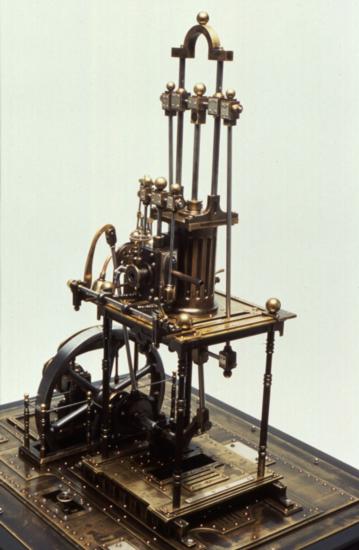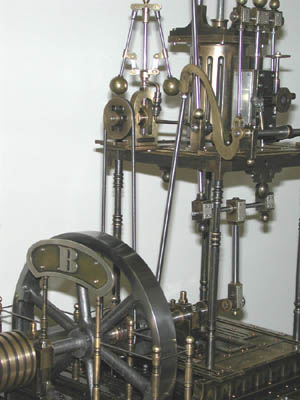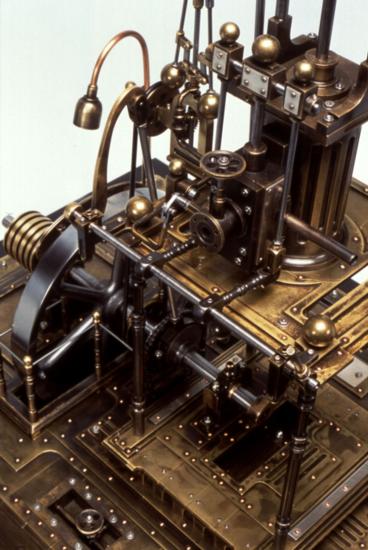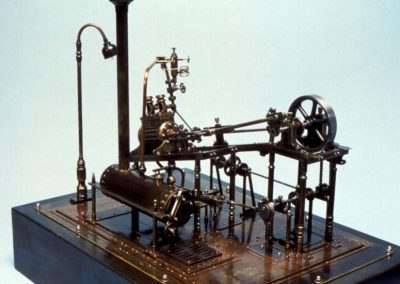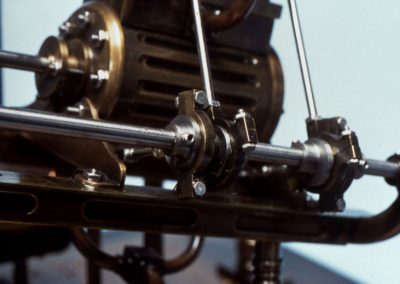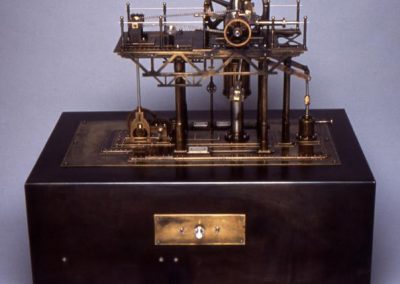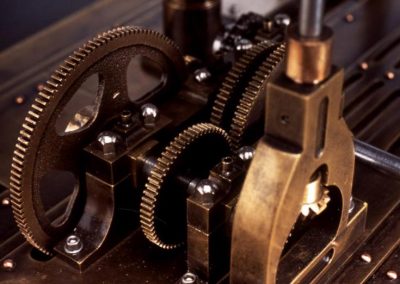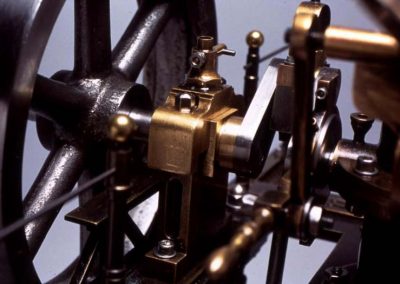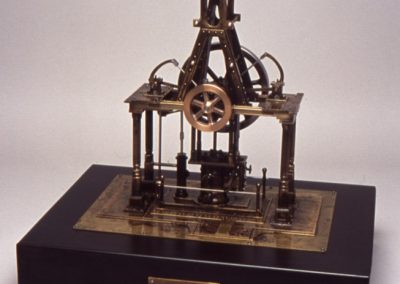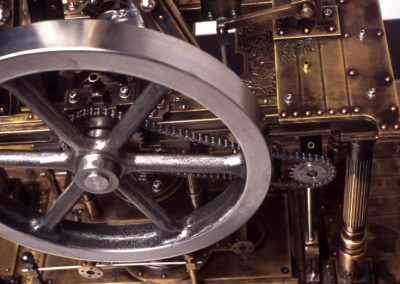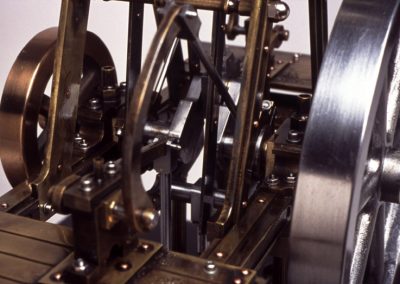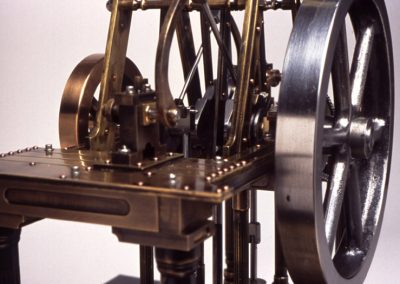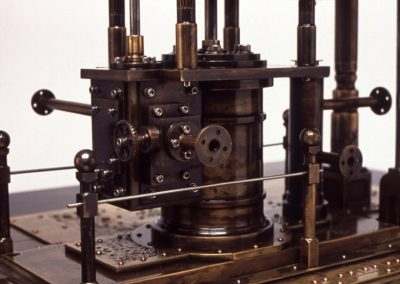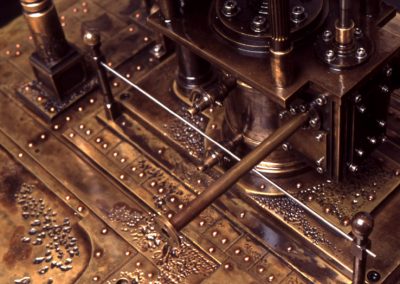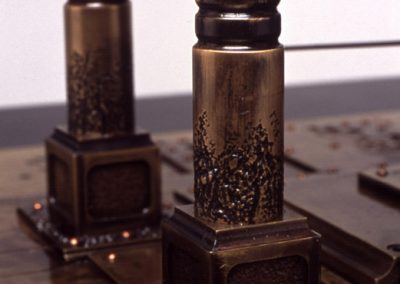Below you can view more photos of William Dubin’s fine mechanamorphic sculptures. Click on images to enlarge.
Babette
This mechanamorphic sculpture is called Babette. (Each of Mr. Dubin’s works is given its own name.) It is one in a series of art pieces that use the elements of model engineering, combined with movement and a patina of aged metal, to give the look and feel of an antique engine—without copying any existing machine. Mr. Dubin works to the same levels of precision as other model engineers, but the goal of his work is not necessarily to produce a model of an engine. Instead, he looks to capture the essence of the look, feel, and precision of engines at the dawn of the machine age.
Babette
This close-up view of Babette shows the high quality machining skills needed to capture the look and feel of an entire era of engines in a single piece.
Persephone
Another close-up of Persephone shows the wealth of beautifully executed mechanical detail on these fanciful engines.
Jenny
An overall view of Jenny. On the front of the display stand is the panel that controls the internal power unit to make Jenny move. Mr. Dubin’s mechanomorphic sculptures are best appreciated when seen in motion. All photos of Jenny were contributed by Melinda Holden.
Jenny
This view shows the flywheel and chain drive. Parts feature a unique etched patina that implies great age. Jenny is 24” high, 24” long, and 18” wide. All measurements include the base. She is made of brass, silver steel, and cast iron.

